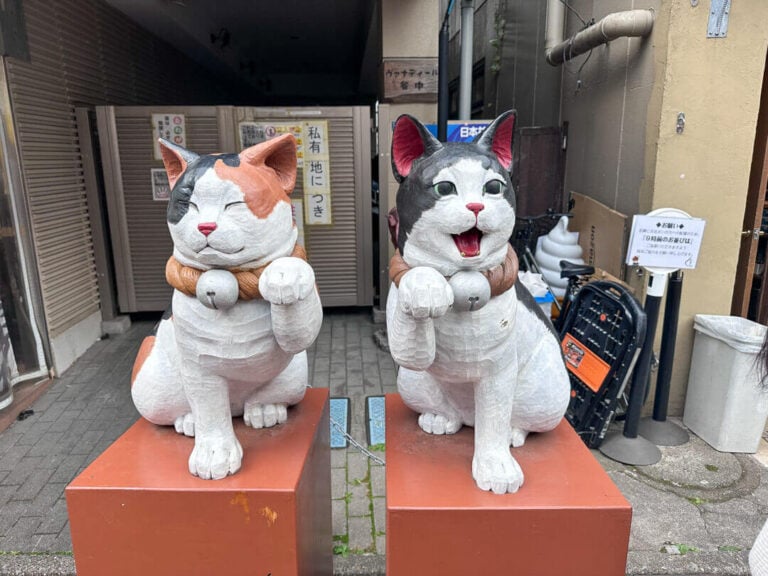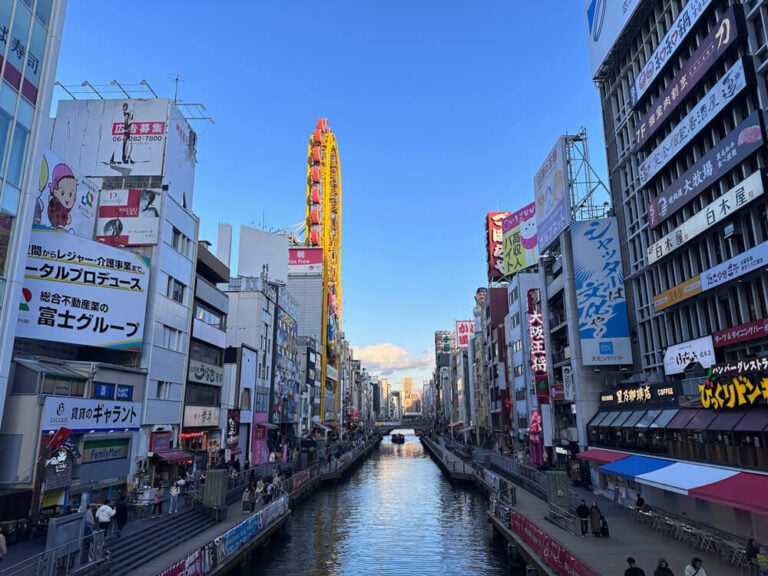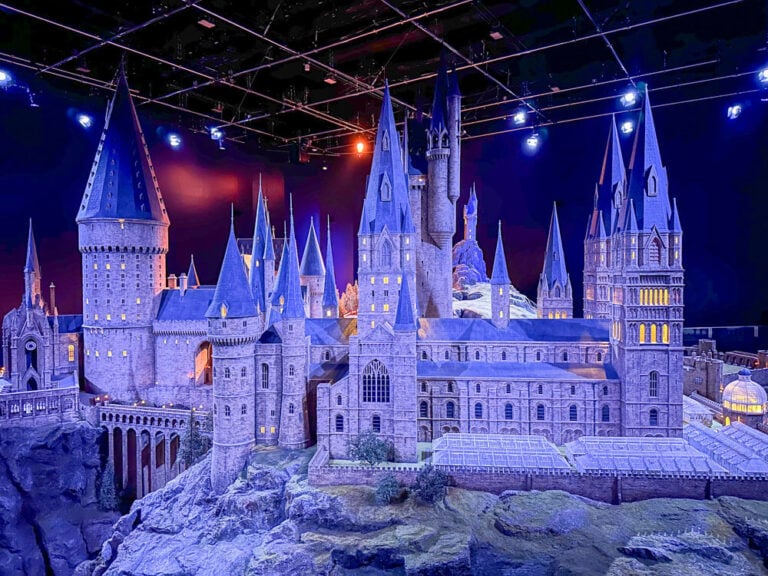The Ultimate Japan Travel Guide For First Timers (2025)

Planning my solo trip to Japan was anything but easy. While Japan is a magnificent country, organising a trip there can feel overwhelming.
From creating your itinerary to working out transport, food and accommodation, there’s so much to think about when planning your first trip to Japan.
So, here I am to help. In this Japan travel guide, you’ll find all the basics about planning your first trip to Japan, Land of the Rising Sun.
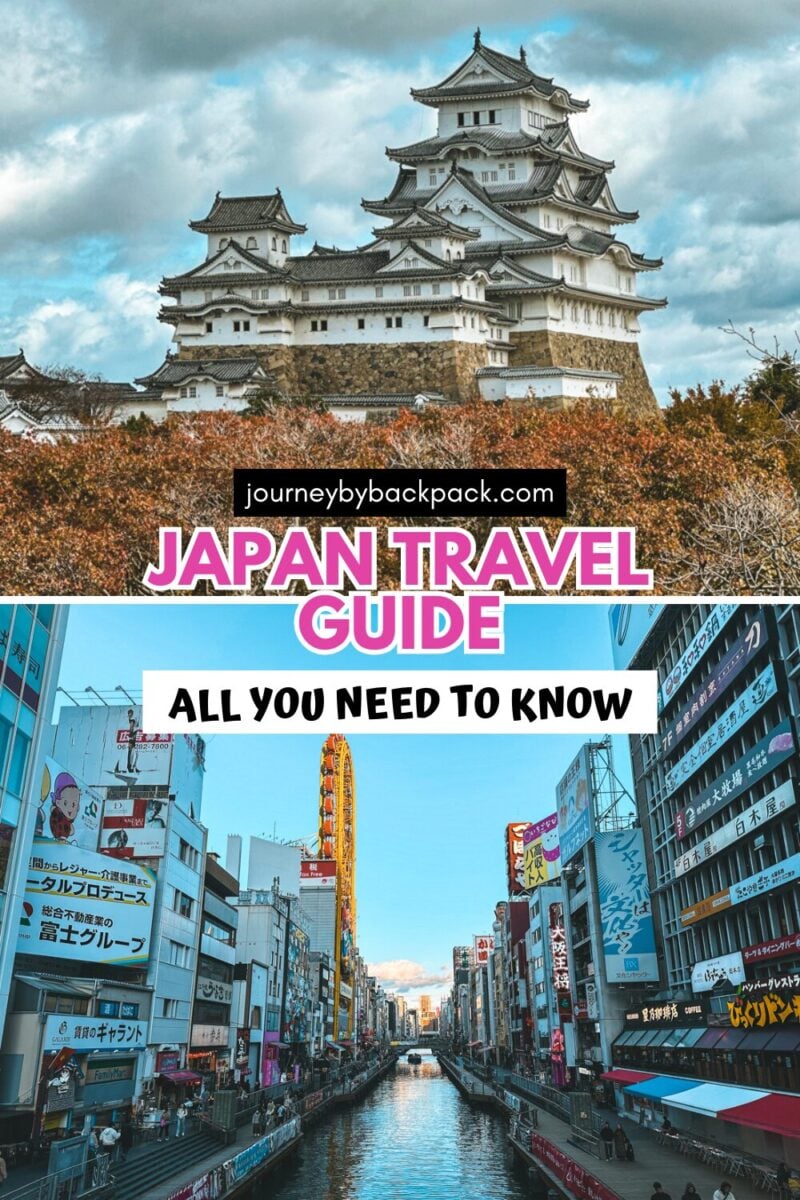
This includes the best places to visit, suggested itineraries, when to visit, how long to stay, and many useful tips to help you have a trouble-free trip.
The goal of this travel guide for Japan is to give you all the essential information in one helpful post, with a focus on information for first-time visitors. Japan remains one of my favourite countries to date, but it does require a lot of planning before visiting.
I hope you find this post helpful.
Planning your first trip to Japan
Let’s start with the basics of planning a Japan trip. In this section, I’ve discussed when to visit, how long to spend there and how to check travel restrictions.
Best time to visit Japan
There’s no bad time to visit Japan. It’s a great destination to visit throughout the year, but each season offers something different.
Japan is in the Northern Hemisphere, with seasons similar to those of the UK and the USA. One thing to know is that the seasons in Japan can be extreme. The summers can get very hot, and the winters very cold.
Here’s a quick overview of the different seasons.

Spring (March to May)
Thanks to the cherry blossom season (Sakura), spring is the most popular time of year to visit Japan. Throughout April, Japan lights up with pink as the cherry blossoms bloom. It’s a great time of year to visit, but it can be incredibly busy and expensive.
Summer (June to August)
Summer is a fantastic time to visit Japan. It tends to be quieter than Spring, and most of the country is accessible (you can even hike Mount Fuji).
The summer months can be very hot and humid (especially in Tokyo). It’s also the typhoon season, which sometimes disrupts transport and activities.
If you can cope with the heat and don’t mind the potential of extreme weather, the summer is a great time to visit.
Autumn (September to November)
Autumn is my favourite time of year to visit Japan. The days are a bit cooler, the weather is favourable, and the crowds aren’t too chaotic.
It’s also the best time of year to see Mount Fuji. Thanks to minimal rainfall and clear skies, Fuji is often on show.
You’ll also witness the beautiful autumn colours as the trees turn brown, orange and gold.
Winter (December to February)
Japan is a fantastic winter destination, especially if you enjoy winter sports such as skiing.
Major cities such as Tokyo and Osaka are usually accessible. While it can get cold, any snowfall normally doesn’t stay for long.
Outside of the cities, you might find destinations such as Hakone and Hokkaido a little trickier to navigate due to the heavy snow. However, many of the outdoor destinations have winter activities such as snowboarding and skiing on offer.
Summary
So, when should you visit Japan? As you can see from above, there’s no wrong time.
Seeing the cherry blossoms is often high on people’s bucket lists. Just be prepared for huge crowds and premium prices.
Personally, I think autumn is the best time. Japan is beautiful in October and November, the temperatures are manageable, and there are fewer crowds.

How long to spend in Japan
As long as you possibly can! Joke. Well, kind of.
Japan is a fascinating country with so much to see and do. I spent over three weeks there, and it was barely enough time to scratch the surface of what the country has to offer.
If it’s your first trip to Japan, I recommend spending at least two weeks there. This will give you enough time to explore the main destinations such as Tokyo, Osaka, Kyoto and Hiroshima.
Of course, the longer you spend there, the more you can see. I really don’t think it’s the type of country where you will run out of things to do.
If you only have seven days in Japan, don’t worry. That’s still enough time to explore a couple of the cities and do some day trips.
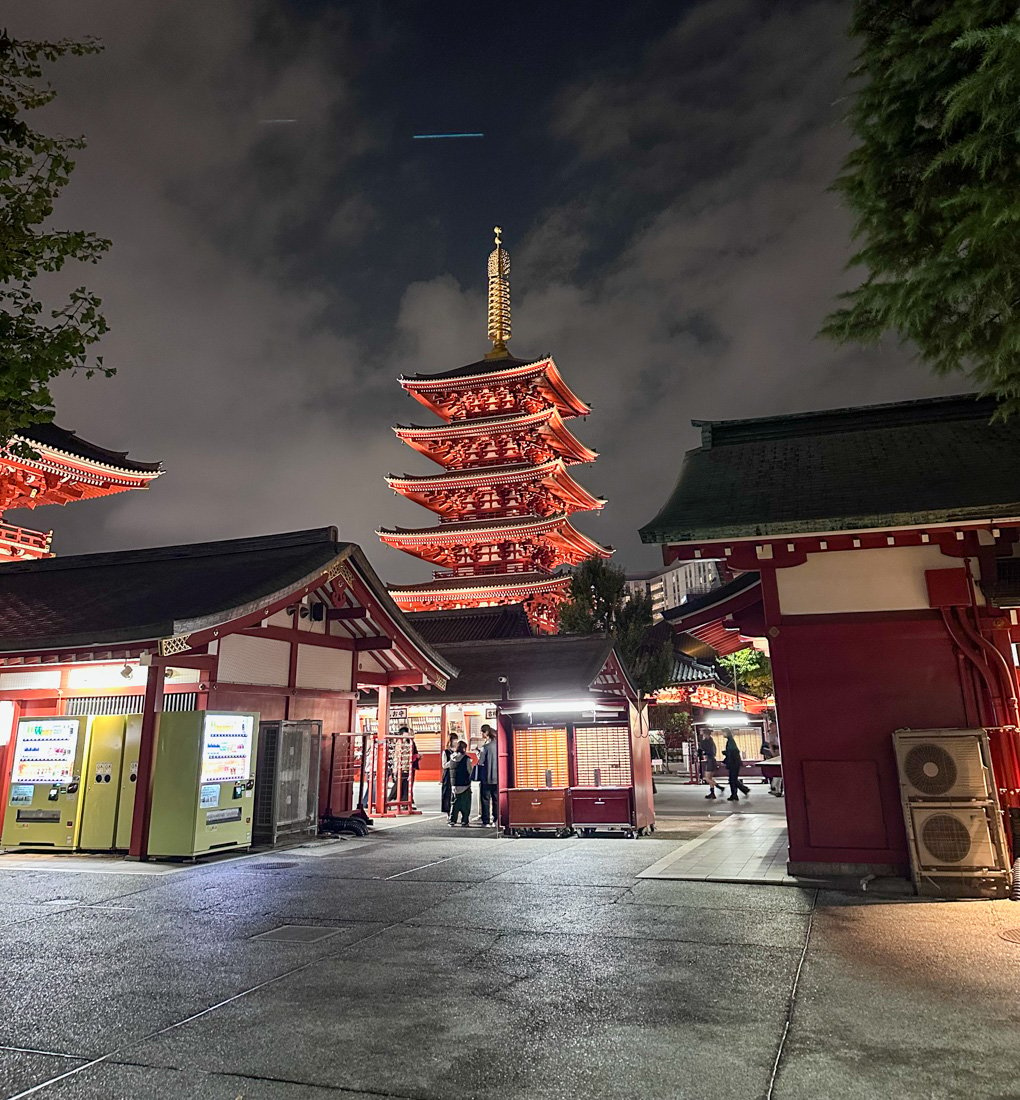
Visa requirements and travel restrictions
Whenever you visit a country, it’s important to check any visa or travel requirements well ahead of time.
Pro tip: I always keep an eye on any restrictions or entry requirements in the run-up to my trips. Things can change quickly, and you don’t want to be caught out (this happened to me before my trip to Ecuador).
For most visitors, it’s possible to get a visa for up to 90 days on arrival, meaning you don’t need to worry about applying for a visa in advance.
However, it’s essential to verify this yourself. You can check your government’s foreign travel advice page or Japan’s government website. Information can change quickly, and some countries do require a visa.
You must also fill out immigration and customs forms before entering Japan. This can be done on arrival, but it’s much easier to do ahead of time. Check out the latest information here.
Getting around Japan & Japan Rail Pass
Where to begin your trip in Japan (and where to end)
Unless arriving on a cruise ship, you’ll need to fly into Japan.
Most visitors choose to begin their trips in Tokyo, where most international flights land.
You’ll find two major airports in Tokyo: Haneda and Narita. Haneda is slightly closer to Tokyo, but both airports are well-connected to the city. I wouldn’t worry too much about which of the two to choose.
Japan’s other major international airport is Kansai, which is close to Osaka and Kyoto.
If you can, I recommend starting your trip in Tokyo and ending in Osaka (flying out of Kansai airport). This means you don’t need to worry about getting back to your starting point for your return flight.
If that’s not possible, don’t worry too much. Osaka, Tokyo and Kyoto are all very well connected by high-speed trains. It should be easy enough to get back to your starting airport.

Getting around Japan
Public transport in Japan has a reputation for being difficult to navigate, but how true is that? Honestly, I was pleasantly surprised.
Firstly, transport in Japan is on another level. The trains are clean, fast and efficient. Despite being a relatively expensive country, I found transport in Japan to be affordable.
For the most part, you’ll need to use the metro or trains to get around Japan. This includes both the public trains and Japan Rail, which operates the famous Shinkansen (bullet train).
The big cities have a public metro or train system and trains connecting the major destinations.
Put it this way: I was in Japan for three weeks, visiting several destinations, and spent five days in Tokyo, and I never once needed a taxi.

Buying your tickets
Most stations have ticket machines where you can buy any tickets you need. There’s also the option to have the language set as English, making it easy to navigate.
If you get stuck, staff are always on standby to help (although there are sometimes long queues).
Navigating the stations
The tricky part for me was getting around the stations and finding the right platforms. Japanese train stations are HUGE, especially Shinjuku. It’s almost a city within a city.
Most of the bigger stations have English signs to help you find where to go, but it can still be confusing.
Tips for navigating public transport in Japan
- Arrive early. Arrive at the station with plenty of time, and I mean plenty of time! Some of Japan’s stations are gigantic, and finding your platform can take a while. On top of this, there can be long queues to buy your ticket.
- Plan ahead of time. Try and plan your journey ahead of time. Transport is very efficient in Japan, and you don’t want to miss your train.
- Always buy your ticket before travelling. Make sure to purchase your ticket before getting on the train. It’s also worth buying ahead of time, especially during busy periods on busy routes. I wanted to visit another city near Tokyo, but all of the express trains had sold out that day. If you need to buy a ticket, go a day or two before.
- Follow the customs. Try to be respectful and follow train etiquette in Japan. It’s considered polite to be quiet on the trains, don’t eat any food, and don’t sit in the priority seating (even if they’re empty).

Is a Japan Rail pass worth it?
Quick overview
The JR Pass is a popular train ticket around Japan. It provides unlimited travel across the Japan Rail network for a set number of consecutive days (either 7, 14 or 21).
Japan Rail operates the famous Shinkansen (bullet train), a popular and efficient way to get around the country.
It’s only available for tourists, and you can buy ahead of your visit from the official website. They will ship worldwide within a few days.
Drawbacks
In 2023, the Japan Rail Pass had a significant price increase. A 14-day pass will now set you back a whopping $528 (2025).
While having one ticket to get around Japan might seem worth that cost, it’s important to know that the ticket is only for Japan Rail lines. For example, you’ll need a separate ticket to use the majority of the Tokyo Metro System (although JR does have a few trains within the city).
It also doesn’t cover all of the Shinkansen (bullet trains). You won’t be able to use the Nozomi or Mizuho trains without paying an additional cost.
So, is it worth it?
Honestly, since the price increase, it’s unlikely that a JR Pass will save you money.
Of course, this entirely depends on your route. If you only have a week in Japan and plan to visit Tokyo, Osaka, Kyoto and Hiroshima, it might be that the pass saves you a bit of money.
However, that would be one busy week and not something many people try to do.
For most people, I don’t think buying a Japan Pass is worth it. The best thing to do is add up the cost of all your train tickets and compare this to the cost of a JR Pass. You can do this using the Japan Travel App.
If you’d prefer not to worry about having to get the right ticket, then a JR Pass can alleviate some of that hassle. However, for a guaranteed seat on the train, you’ll still need to book in advance.
Regional passes
One option to consider is buying a regional pass. These handy passes focus on one specific region, such as the Kansai area, and allow unlimited travel on Japan Rail within them.
For example, if you’re planning to spend a few days travelling around Osaka, Kyoto and visiting additional cities such as Hiroshima and Kobe, you might find the Kansai Regional Pass saves you money.
I used this for five days, and it did save me a bit of money, so it’s worth considering.

Luggage restrictions
The bullet trains have strict luggage restrictions. As of 2025, the maximum size for a piece of luggage is with an overall dimension of 250cm (add the length, height and depth together).
If your luggage is between 160cm and 250cm, you’ll need to book an oversized baggage seat in advance. You can do this at the station.
A Suica Card or a Pasmo Card?
Another option for your trip to Japan is to get a Suica or Pasmo card. Both cards are pre-paid travel cards you can use on most trains in cities such as Tokyo, Osaka and Kyoto.
You can also often use them to pay to store luggage in stations and even pay for things at 7-11!
I ended up buying a Suica card towards the end of my trip and I wish I had bought one sooner. It was so much easier to put a lump sum of money on my card and use it to get around the cities.
You simply tap the card on the electronic gate, and tap it again on the way out. It will then take off the right amount of money.
You can’t use them on long-distance trains, but they’re a fantastic way to get around the bigger cities.
You can purchase them ahead of time, but it’s MUCH cheaper to pick one up when you get to Japan. It’s possible to buy them at most train stations.

Driving in Japan
If you’re a confident driver, it’s possible to rent a car in Japan.
You’ll need the correct documentation, which normally includes an International Driver’s License (but check this with your rental company).
I was surprised at how non-chaotic Japan’s roads were, at least compared to the likes of London.
While I didn’t hire a car, I would have felt confident in doing so.
However, I don’t think it’s necessary. Japan has a fantastic rail and bus infrastructure, one of the best in the entire world. Finding parking for your car would no doubt be a hassle, especially in the cities. It’s also very expensive.
Unless you want to go really off-the-beaten-path and avoid the main cities, I don’t think hiring a car is worthwhile.
Luggage forwarding in Japan
One thing that blew my mind about Japan was the luggage forwarding services. I’ve never seen this anywhere else in the world, at least on this scale.
Most visitors to Japan plan to visit more than one destination. But let’s be honest, who really wants to carry their luggage around?!
So, the solution? Luggage forwarding services. Put simply, you book for your luggage to be sent to your next hotel.
This means you don’t need to worry about carrying luggage on trains or around the city. And don’t worry, this is extremely common in Japan and hotel staff are well-used to dealing with it.
If this sounds like something that might work for you, then Yamato is one of the most popular providers.
In all honesty, unless you’re physically unable to carry your luggage, I don’t really think this is necessary.
The luggage forwarding services will tell you that it’s not easy to take suitcases and backpacks on trains in Japan, but I saw loads of people doing it without any issue.
In rush hour when the trains are busy, it can be difficult to squeeze in. But I carried my 19KG backpack around for three weeks and never once had an issue on the trains.
However, I’m sure luggage forwarding will be an easier option for some.

Best places to visit in Japan
Top destinations in Japan
Next up, which destinations should be on your Japan itinerary? Well, let’s start by saying that Japan is filled with wonderful places to visit. It would be almost impossible to name them all.
As this Japan travel guide is aimed at first-timers, I’ve stuck with the most popular places (as well as a couple of hidden gems).
Most destinations are found on Japan’s main island, Honshu. But it’s also a popular option to visit Hokkaido, another island in Japan.
For those in a rush, here’s a quick summary of destinations to consider. Below, you’ll find a more detailed breakdown of each destination.
- Tokyo (3 to 5 nights)
- Hakone (1 or 2 nights)
- Kyoto (3 nights)
- Osaka (2 or 3 nights)
- Hiroshima (1 or 2 nights)
- Okinawa (2 or 3 nights – but only if you want to visit beaches)
- Hokkaido (5 nights)

Tokyo (at least 3 nights)
Let’s start with Tokyo, Japan’s impressive capital city (and the most populated city in the world).
Tokyo seems to cause a bit of a divide; some people love it, and others hate it.
Personally, I love it. It’s such an incredibly diverse city. Skyscrapers, temples, delicious food, traditional markets, arcades, parks… Tokyo has it all.
It can get very busy and feel overwhelming, but one thing I love about Tokyo is quickly being able to escape this. Tokyo has so many little side streets and areas to explore without the busy crowds.
If this is your first trip to Japan, I really do think it’s worth spending a few days in Tokyo. It’s easy enough to escape the city on day trips to places such as Nikko or Hakone. And it’s a great place to learn about Japanese culture and get a feel for the country.
Side note: If you want to see the famous monkeys in Jigokudani Monkey Park (where they relax in hot springs), it’s easiest to travel from Tokyo.
You can go to Nagano and get to the park from there or book a tour from Tokyo. This highly-rated tour includes all of your transport and lunch.
If you’re a fan of Harry Potter, don’t miss Japan’s version of the Studio Tour.

Hakone (at least 1 night)
Hakone is one of the best places to visit in Japan. There’s the option to visit as a day trip from Tokyo, but I highly recommend spending at least one night there.
This little mountain town is surrounded by incredible scenery, including Mt Fuji (Japan’s famous volcano).
Hakone is like nowhere else I visited in Japan. It shows a completely different side of the country and has so many unique things to do.
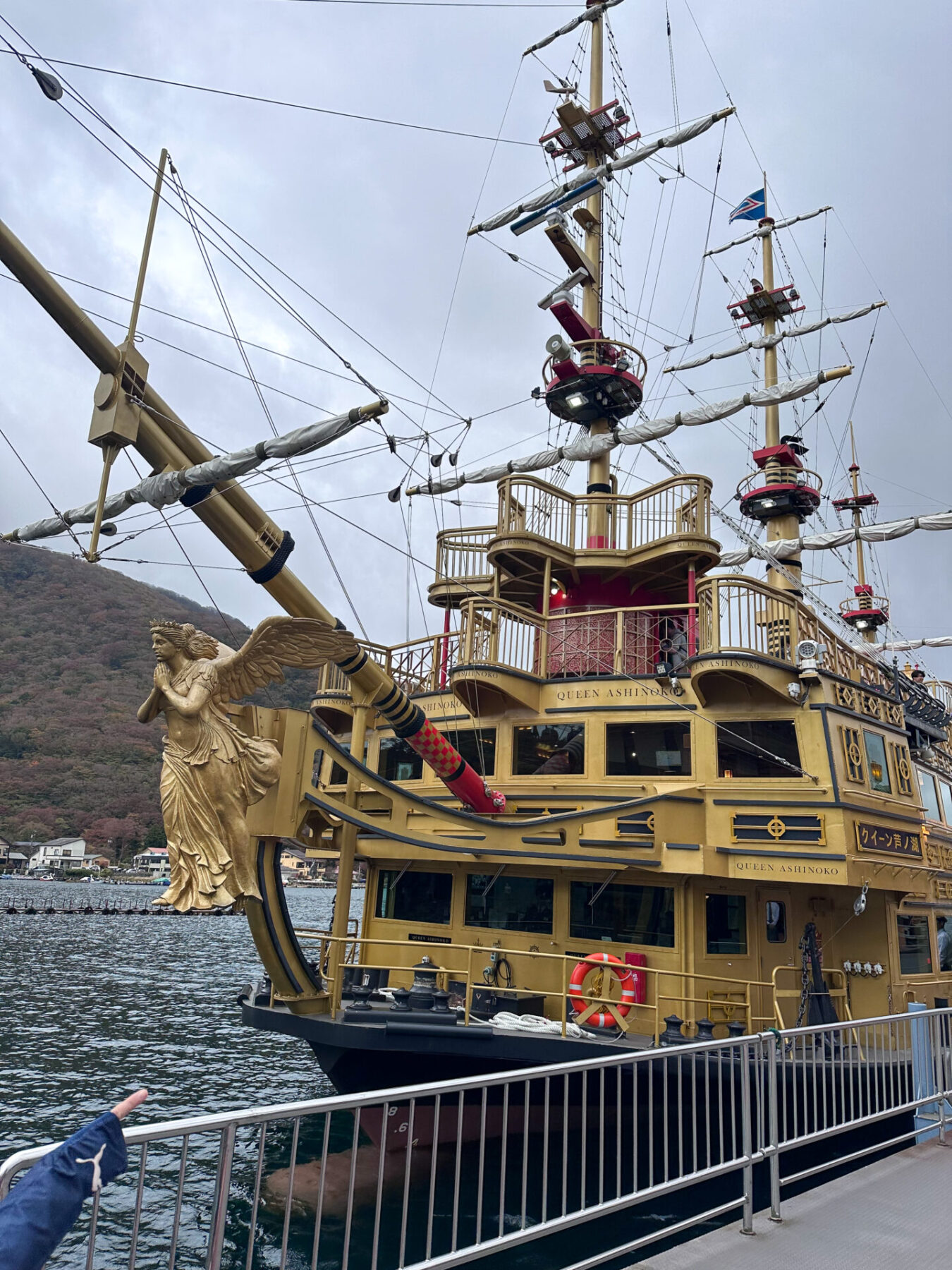
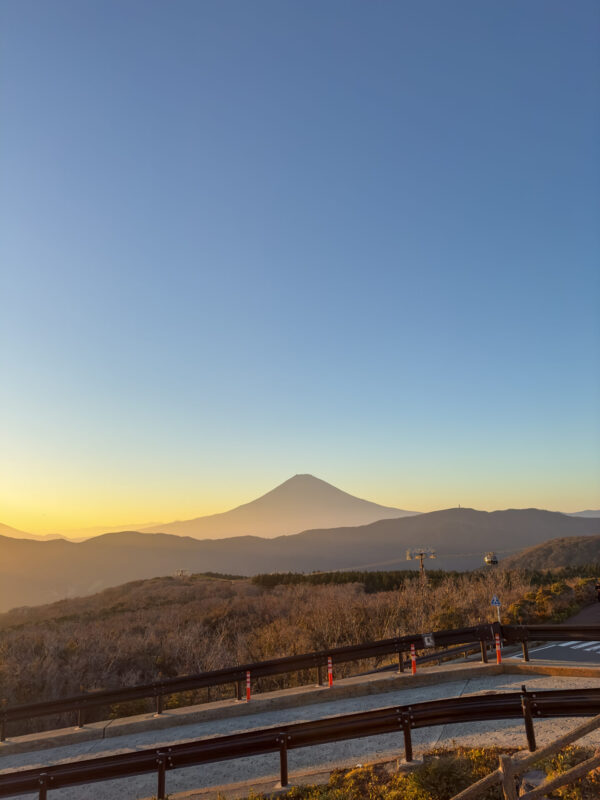
Ride a pirate ship across a lake. Relax in an onsen. Search for the best views of Mount Fuji. Ride a cable car across a volcanic landscape. Try a black egg. Seriously, Hakone is an absolute must-visit destination.
Kyoto (at least 3 nights)
Kyoto is one of Japan’s most popular destinations and an absolute must for any first-time Japan itinerary.
Home to an incredible 17 (!) UNESCO World Heritage Sites, including the famous Kinkaku-ji temple and several places in the Southern Higashiyama area, Kyoto is the perfect place to immerse yourself in Japanese culture and learn about its ancient history.
It’s also where you’ll find the beautiful Fushimi Inari Shrine, the famous orange Torii Gates you’ve undoubtedly seen on social media.
Kyoto is also an excellent base for day trips, including to Nara (where you’ll find the bowing deer).
It’s easy enough to get between Kyoto and Tokyo, with the quickest train taking around two hours.
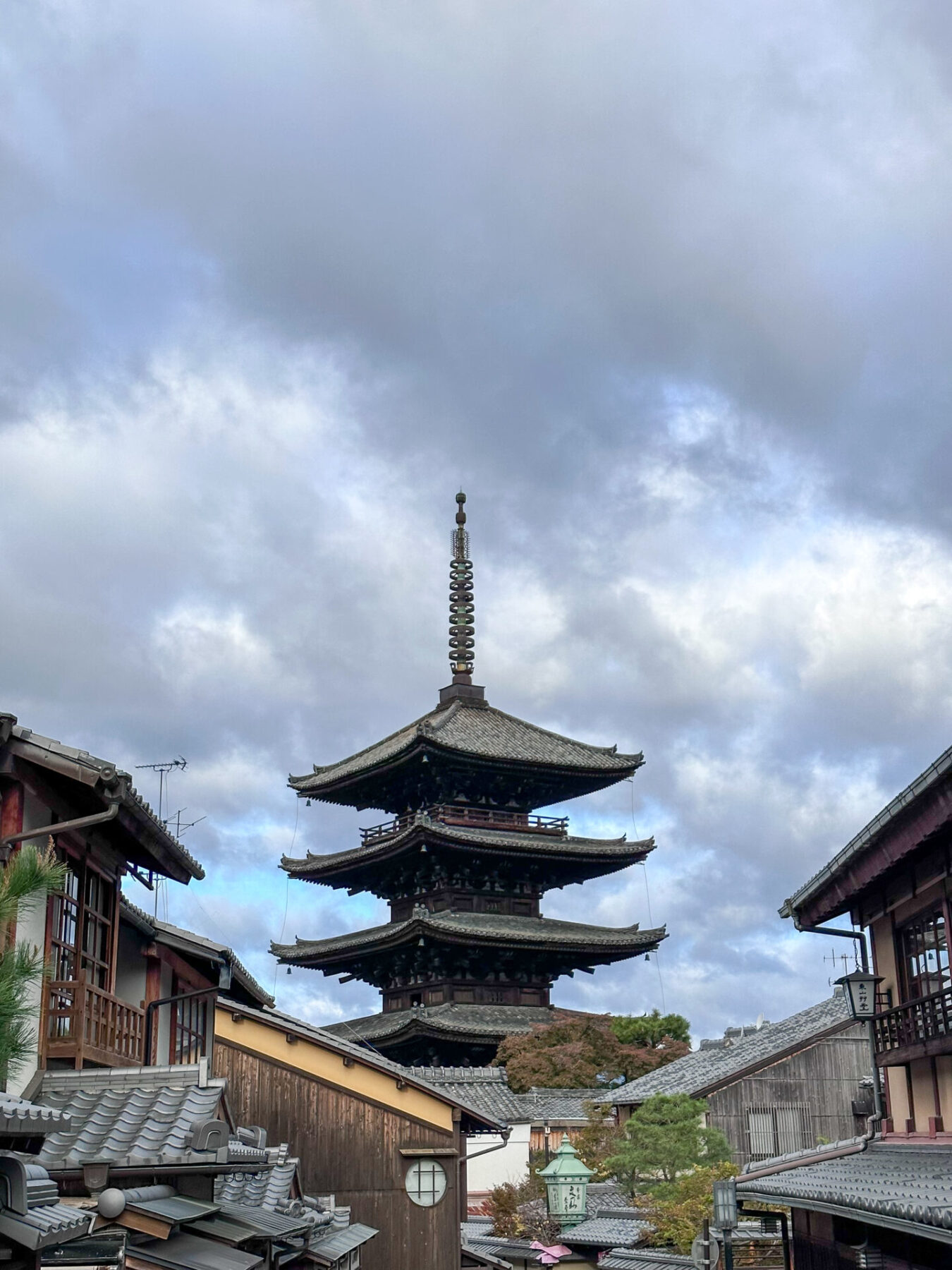
Osaka (at least 2 nights)
Osaka is another popular destination in Japan, and a great place to base yourself for a few days. In fact, if you’re not keen to keep moving around, I suggest basing yourself in Osaka and visiting destinations from there.
From Osaka, it’s possible to visit several popular destinations. This includes Kyoto, Nara, Himeji, Kobe and even Hiroshima.
If you’re stuck between staying in Osaka and Kyoto, I recommend Osaka. The city has more to offer, and it’s easy enough to get to Kyoto on a day trip (the fastest train only takes 15 minutes).
One of my favourite things I did in Osaka was visit the beautiful Minoo Park. It’s only a short train ride from the city but an entirely different experience. With stunning temples and incredible mountain views, it’s well worth it.

Hiroshima and Miyajima Island (at least 1 night)
Hiroshima is another fascinating city in Japan. In 1945, the United States dropped a nuclear bomb on the city, killing an estimated 145,000 people.
Today, the city has been rebuilt and is a testament to the strength and resilience of the Japanese people.
From Hiroshima, it’s also possible to visit Miyajima Island, home to the Itsukushima Shrine (one of Japan’s most photographed spots).
Found in the Seto Inland Sea, Miyajima is home to some great hikes and traditional temples. The island is also known for its Oysters, and you’ll find them being sold in all shapes and forms.

While visiting Hiroshima as a day trip from Osaka is possible, I don’t recommend it. It would be a long day, and you wouldn’t have enough time to see everything.
Try to spend at least one night there, but two if you can. Two days in Hiroshima is the perfect amount of time to see the highlights, including Miyajima.
Spend one day exploring the historic side of Hiroshima, including the Peace Memorial Museum, and the second day on Miyajima Island.

Okinawa (at least 2 nights)
Okinawa is a little less known than other places on this list. But if you want to relax on a beach and see an entirely different side of Japan, this is the place.
I didn’t make it to Okinawa on my trip to Japan. As it was November, the temperatures didn’t favour lying on a beach (although the region does have a warmer climate than other areas in Japan).
I’m not sure I would prioritise this destination on your first trip to Japan, but I thought I’d mention it anyway!
Hokkaido (at least 5 nights)
Hokkaido is one of Japan’s main islands, and it’s where you’ll find the incredible city of Sapporo. It’s also a hub for some epic hiking and skiing in the winter.
In all honesty, Hokkaido is a trip in itself. I know people who have gone to Japan and spent two weeks exploring Hokkaido.
While it’s an incredible destination, I only think it’s worth going if you have enough time to see it properly. It will involve another flight, or long train journey,
Unmissable activities
Okay, let’s be honest. There are so many epic things to do in Japan. I could write a post of about 30 things for Tokyo alone.
This post aims to be a ‘quick read’ and summary for first-time visitors to Japan, and the last thing I want to do is overwhelm people.
With that in mind, I decided to write a post about what I believe are the top things for first-time visitors to do in Japan.
From staying in a traditional Buddhist temple to tasting traditional street food, Japan has something for everyone.

Suggested Japan itineraries
7-day Japan itinerary
With one week in Japan, I would split your time between two destinations. Tokyo and Osaka are my top choice, and you can do day trips to other spots.
Here’s a rough idea:
Day 1: Get orientated and check out some of Tokyo’s highlights
Day 2: Explore the temples of Tokyo and check out the Yanaka Ginza area
Day 3: Check out Tokyo’s shopping scene, and visit the notorious Harajuku area
Day 4: Consider a day trip to Hakone or Nikko
Day 5: Jump on a train to Osaka, and check out the city’s highlights
Day 6: Take a day trip to Kyoto
Day 7: Visit Nara and do any last minute shopping in Osaka
It would also be easy enough to spend 7 days in Tokyo, it entirely depends on what you want to do.

14-day Japan itinerary
Two weeks is a fantastic amount of time to spend in Japan if it’s your first time. Here’s exactly how I would spend two weeks in Japan:
Days 1, 2 & 3: Explore Tokyo and its highlights
Days 4 & 5: Visit Hakone and stay overnight, take a late train to Kyoto
Days 6 & 7: Check out Kyoto’s highlights
Day 8: Visit Nara, home to the famous deer
Days 9 & 10: Head to Hiroshima and spend two nights there, consider visiting Himeji Castle on the way (and trying a traditional Japanese Tea Ceremony, one of Japan’s ancient traditions)
Day 11: Head to Osaka
Days 12, 13 & 14: Check out Osaka’s highlights and consider day trips to places such as Minoo Park and Kobe.
If you want to spend more time in Tokyo, consider dropping either Hakone or Hiroshima from the itinerary (or spending less time in Kyoto or Osaka).

21-day Japan itinerary
Three weeks in Japan gives you ample time to get to know Japan.
Personally, I would stick to my two-week itinerary above but spend a bit more time in Tokyo and Osaka. There’s the option to do day trips to places such as Himeji, Nikko and to see the bathing monkeys.
The alternative option is to head up to Hokkaido for the final few days. Here, you can explore Sapporo, go hiking or go skiing in the winter months.
Three weeks gives you plenty of time to see the highlights while also exploring more off-the-beaten-track destinations.

Accommodation in Japan
Next up in this Japan travel guide is all about accommodation. Japan has a range of different types of accommodation to suit your budget.
Standard accommodations
Let’s start with the basics – for the most part, you’ll likely stay in either a hostel or hotel.
Booking.com is a fantastic platform for booking your accommodation in Japan. I used it to book all of my accommodations and had zero issues. You can compare costs, check reviews and earn rewards. I also often find it cheaper than booking directly with the hotel.
Hostels
As a budget solo traveller, I nearly always stay in a hostel. They’re a great way to travel on a budget and a fantastic way to meet people.
However, hostels in Japan are a little bit on the pricier side. Depending on the city, most dorm rooms cost me around $30 USD.
The hostels I chose were all so nice though. They were incredibly clean and modern and had all the essentials.
I will say that I didn’t find the hostels to be the most social. I’ve spoken more about this in my Japan solo travel guide.
Even so, they’re still a fantastic choice.
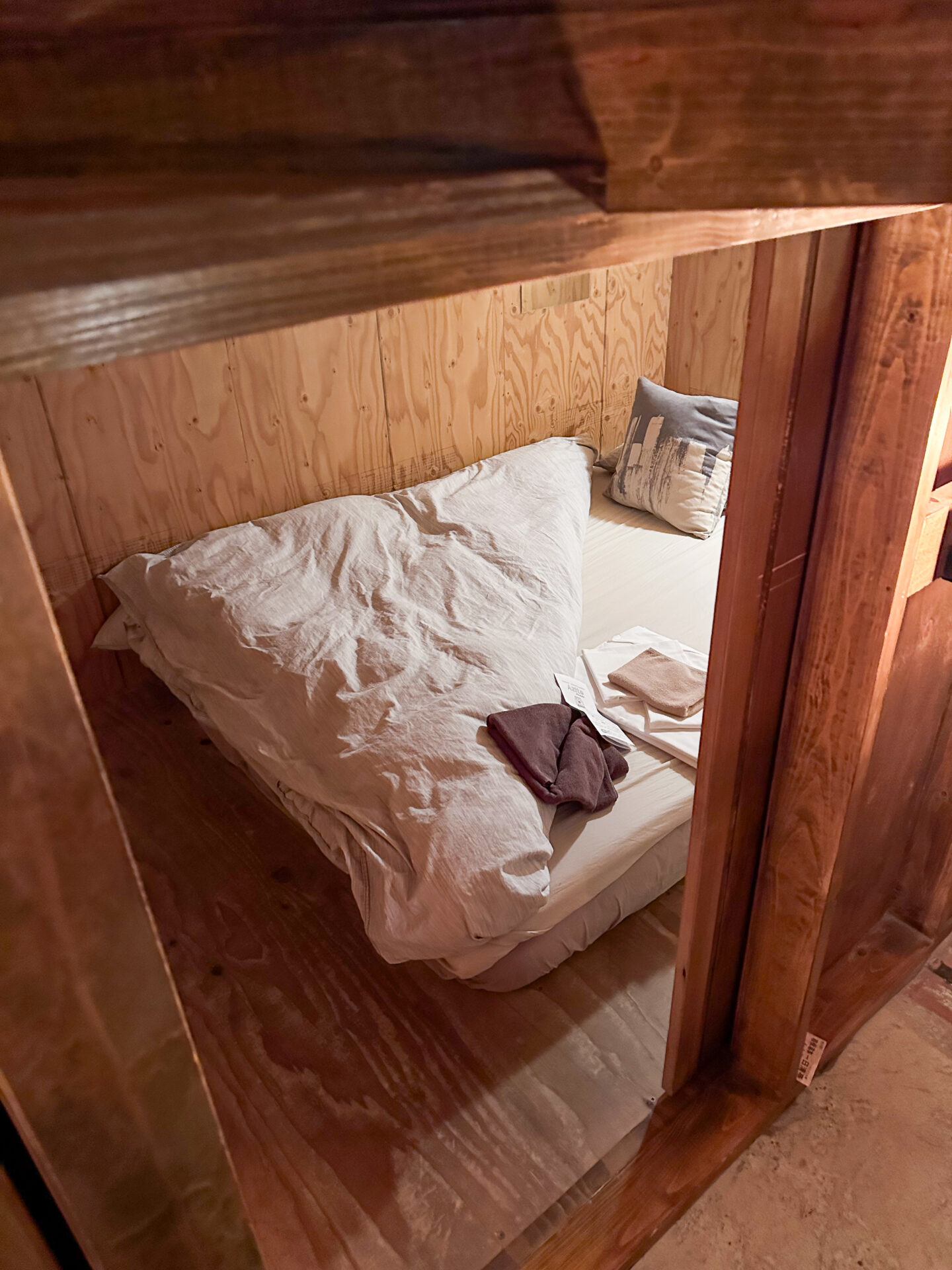
Hotels
There’s no shortage of hotels in Japan. From luxurious stays to budget rooms, all the major cities have an array of hotels to choose from.
Hotel rooms in Japan tend to be small, so don’t expect to have a lot of space in your room.
I also found the hotels to be a little expensive, which is why I spent all my time staying in hostels.
Unique accommodations in Japan
Capsule hostels
Although now popular around the world, Japan is the birthplace of capsule hotels.
Capsule hotels are ultimately a different style of hostel. You’ll be given a capsule containing a bed and sometimes other features such as a mirror or a small wardrobe.
They’re a fun experience and definitely something to try in Japan. I don’t think they’re suitable for more than one or two nights, but they’re a good way to save some money.
Traditional Ryokans
Another popular accommodation in Japan is a Ryokan, a simple Japanese-style inn or guesthouse.
Guests will sleep on futon mattresses on the floor, and most stays will include dinner. Traditionally, guests will be served a Kaiseki – a multi-course Japanese dinner.
Many Ryokans also have access to an onsen.
You can find Ryokans all over Japan, but Hakone is a particularly good place to find traditional ones.
Here are some of the best Ryokans in Hakone.
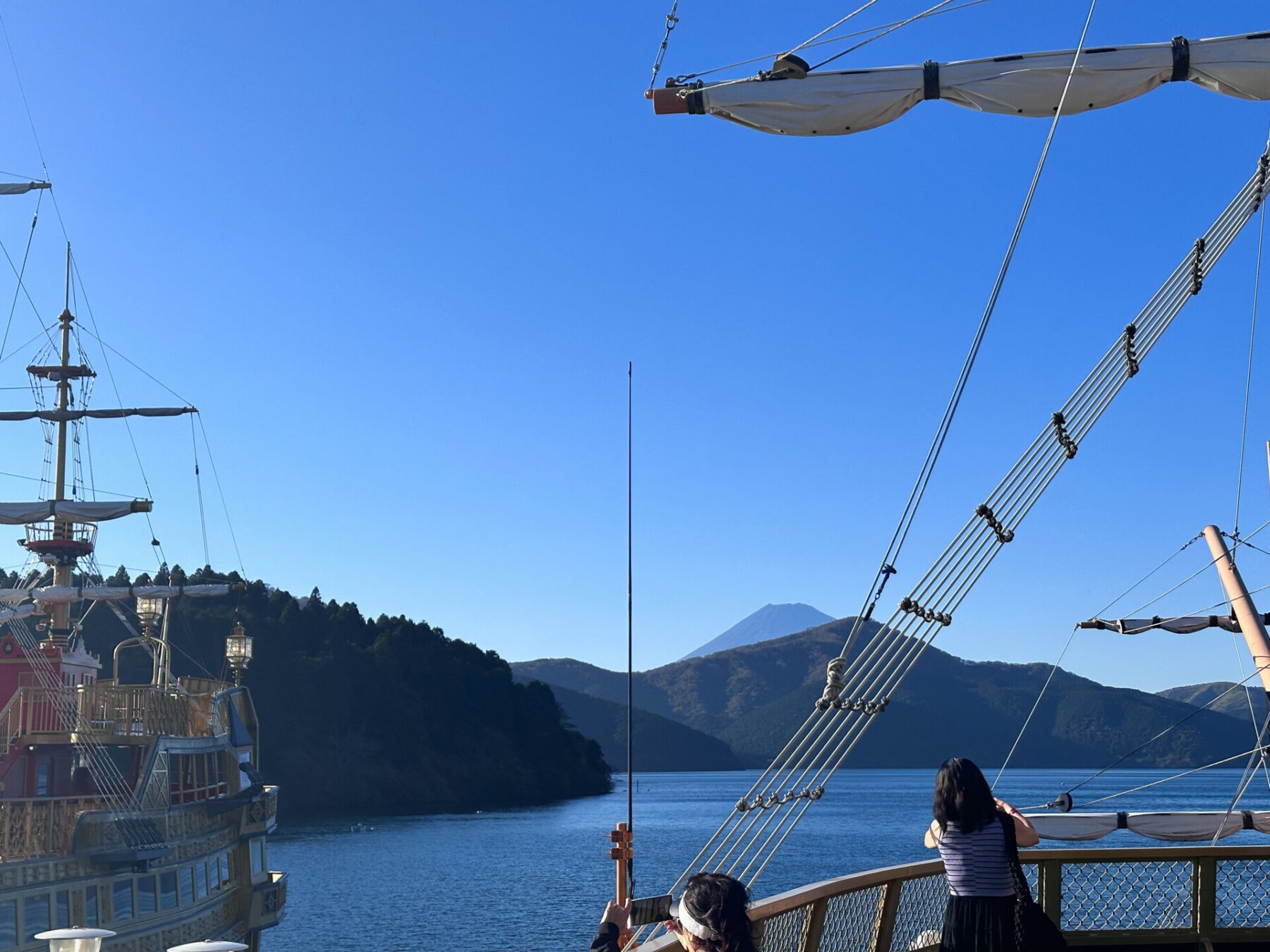
Temple stays
For the ultimate unique accommodation in Japan, consider staying in a Buddhist Temple.
Many temples around the country allow guests to stay overnight, experience how the Monks live and try traditional vegetarian food.
For the most part, you’ll need to book your stay directly with the temples. Kyoto is one of the best places for this. I recommend looking at Myoshin-ji.
Is Japan expensive?
Japan is a relatively expensive country. However, the economy is going through a rough period, and with the low Yen value, it’s a good time to visit Japan.
Here’s a rough idea of how much things cost in Japan. Of course, this varies around the country and depends on how you travel.
It also varies throughout the year. Spring is the most expensive time to visit Japan.
If you want to stay in nice hotels, take taxis and try Michelin Star restaurants, it will cost you a lot. However, it’s also possible to visit Japan on a budget.
During my (almost) four weeks in Japan, I spent just under $1500 (excluding flights). I had budgeted more than this, so I was pleasantly surprised. You could also definitely do it cheaper.
Disclaimer: The below prices are based on my experience in Japan. I always try to travel on a budget, so I search hard to find cheaper restaurants and accommodations. As the economy is unstable in Japan, I would budget a little bit more than you think you’ll need.
| ITEM | ROUGH COST (USD) TO BUDGET PER DAY |
| Hostels | $35 per night (it’s cheaper outside of Tokyo) |
| Capsule hotel | $40 – $50 |
| Mid-range hotel (Tokyo) | $180 |
| Mid-range hotel (outside of Tokyo) | $120 depending on location |
| Metro Transport | $6 – $12 per day (excluding JR Pass) |
| Trains and JR Rail | This depends entirely on your itinerary and if you plan to get a JR Pass. As a rough idea, the Shinkansen train from Tokyo to Kyoto is roughly $90 |
| Coffee | Around $3 |
| Convenience store meal | Around $3 – $5 |
| Street food meal | $5 |
| Non-tourist area meal/local restaurant | $12 depending on location |
| Meal at a popular restaurant | $25+ |
As I said, this is just a rough idea of what you can expect to pay in Japan. You’ll also need to budget for any activities or day tours you want to do.
Food and dining in Japan
Food is such an important part of travel for me, and Japan has some of the best food in the entire world.
I know many visitors worry about the food when visiting Japan, especially those who don’t eat fish. But there’s no need to worry.
Even as a vegetarian, I had no issues finding delicious food in Japan. I think about the food every single day.
The worst-case scenario is that you end up in a restaurant aimed at Western tourists. They’re a bit pricier, but they serve up home comforts, such as burgers, pizzas and salads.
But for most people, I’m sure you want to get a taste of authentic Japanese food.

Must try dishes
Here are some of the best dishes I tried in Japan (plus some others I’ve heard great things about):
Okonomiyaki: This is a savoury Japanese pancake containing cabbage and a variety of toppings. I ate a couple of these around the country, and they were always happy to make it vegetarian.
Yakisoba: This is a stir-fried noodle dish made with vegetables. You can add meat or fish if you want to.
Gyoza: My favourite food in the world. I could eat Gyoza all day long! Try Gyoza Chao Chao in Kyoto.
Ramen: Have you even been to Japan if you’ve not had ramen? Ramen is a famous noodle soup dish that never disappoints me.
Katsu: Another epic dish in Japan. It’s meat or tofu covered in breadcrumbs and deep-fried. You can also get katsu curry.
Japanese curry: THE BEST curry in the world, and no one can tell me otherwise. There is something so rich and flavourful about the curry, especially when it’s served with melted cheese.
Sushi: Sushi is served all over Japan. There are several cheap chains around the country which also serve vegetarian sushi.
Wagyu: Japan loves its beef, and restaurants everywhere serve different varieties. I don’t eat meat so I didn’t try this, but people rave about it.
Miso soup: The perfect side dish to any meal! In many restaurants, you’ll be served a small bowl of Miso soup with your meal.
This is just a quick overview of some of the best foods to try in Japan. For a more in-depth guide, check out this post.

Ordering food in Japan
Ordering food in Japan can sometimes be a stressful experience.
Firstly, not many people speak English. This means communicating any requirements with a complex language barrier.
Secondly, it can sometimes work a bit differently. In many traditional Japanese restaurants, you order food using a vending machine. Yes, you heard that right.
This can be an intimidating experience, especially when the machines are in Japanese.
All the machines work a little differently. However, for the most part, I found you had to put the money in first. After this, you select your meal, take the receipt and hand it to the chef or server.
This only seemed to be the case in non-tourist places. Most of the popular chains had English menus and English-speaking servers.

Convenience stores in Japan
I can’t write this post and not mention the fantastic convenience stores in Japan. Honestly, they’re on a whole other level there.
Popular convenience stores include 7-11 and Family Mart. If you’re from the US, you’ll probably raise your eyebrows at the mention of 7-11, but I promise it’s different in Japan.
The convenience stores have a range of tasty and affordable food on offer. Sushi, sandwiches, smoothies, coffees, baked goods, salads, burgers… the list goes on.
The convenience stores are a fantastic option if you’re in a rush or on a budget. They’re also a part of Japanese culture, so don’t be embarrassed to buy your meals there.
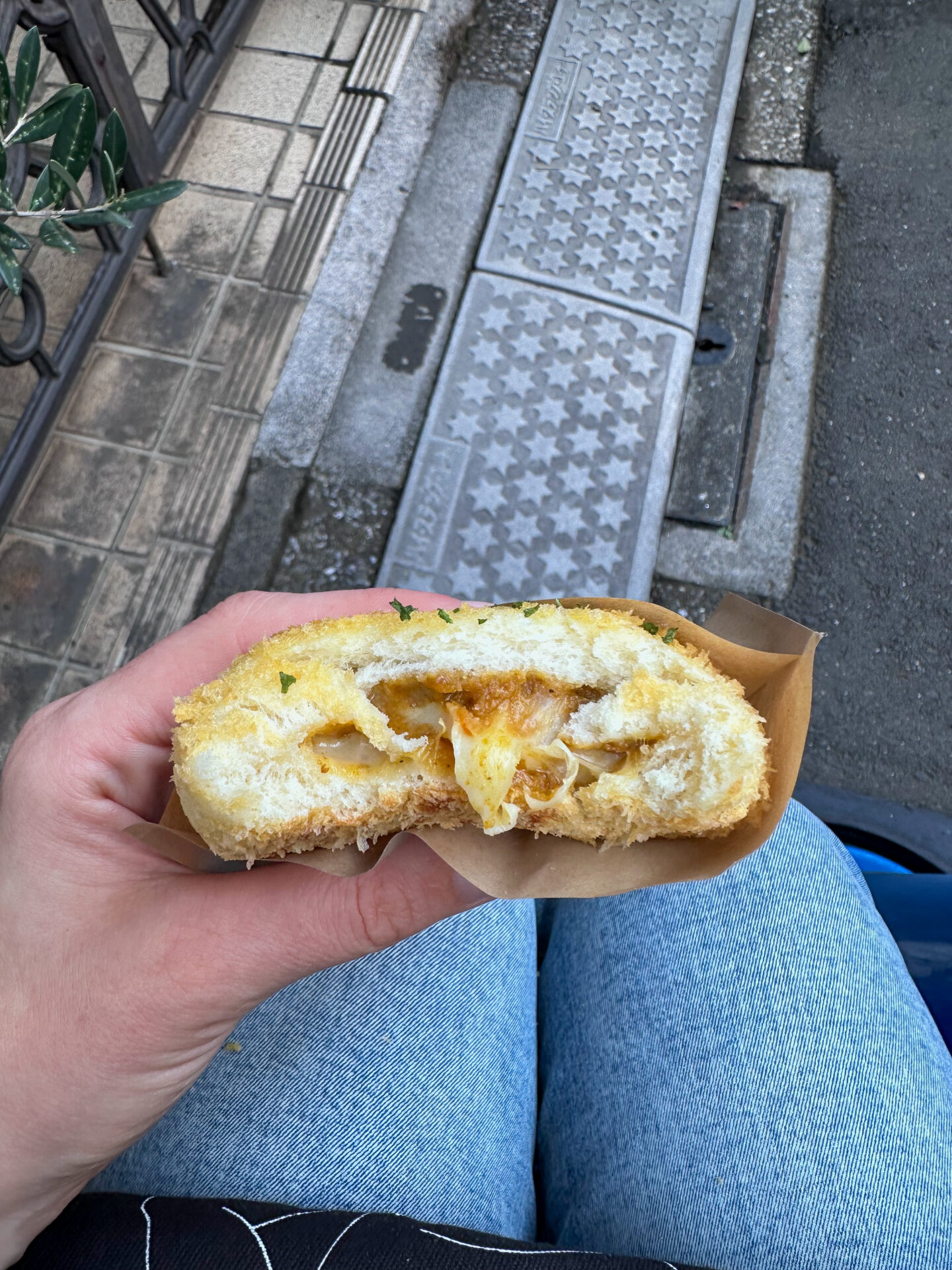
Cultural etiquette in Japan
Life in Japan is very unique, and there are a lot of cultural differences (especially compared to the USA and the West).
It’s a good idea to research the social norms beforehand to ensure you’re respectful and don’t draw unwanted attention to yourself.
It’s worth noting that Japan is very used to tourists, especially in the main cities. I found much of what I’d read to no longer be valid for many tourist areas.
However, as soon as I left the city centres, life seemed much more traditional.
Here’s a quick overview of some of the fundamental parts of Japanese etiquette:
Take your shoes off: Many restaurants, temples, shops and hotels in Japan require you to take your shoes off. You’ll usually be given a pair of slippers to wear inside. I even had to take my shoes off in a changing room for H&M (don’t judge me, I needed warmer clothes).
Be mindful when ordering meals in a restaurant: In Japan, it’s not common practice to change a food dish. You simply order the dish without any extra requirements. You’ll be fine in the places catering to tourists, but be aware that you might not be able to make any changes in more traditional places.
Be quiet on public transport: It’s common courtesy not to talk on public transport in Japan. Some trains even have announcements telling you to be silent.
Be mindful of eating in public: Before I visited Japan, I read in several places that it’s considered rude to eat in public. This is generally true, especially outside of the street food market areas. It’s also considered rude to eat food on Metro trains (but on long-distance trains it’s acceptable). If you do need to eat, stand to the side out of the way.
Don’t blow your nose: A random one, but blowing your nose in Japan is considered extremely rude.
Know the rules of the Onsen: Onsens are traditional public baths in Japan. For the most part, you’ll be required to enter them naked. You also won’t be allowed in if you have any tattoos. You can find out more in this useful post.

Other practical tips for your trip to Japan
Money and paying for things in Japan
The official currency in Japan is the Japanese Yen.
Despite being a technology-focussed country, many accommodations and restaurants still only accept cash.
Having said that, more and more places are starting to accept credit cards, especially in the major cities.
Even so, I recommend having cash with you in Japan, as well as a working credit or debit card you can use abroad.
It’s possible to order currency ahead of time, but you tend to get a slightly better exchange rate by using the ATMs in Japan.
I found that Seven Bank didn’t charge me for withdrawals when I used my Mastercard, but check this with your own bank in advance.
There are ATMs all over Japan, so you shouldn’t have any trouble getting more cash if you need it.
Tip: If you do pay with a credit card and it gives you the option to pay in the local currency or your own currency, always choose local! It works out much cheaper.
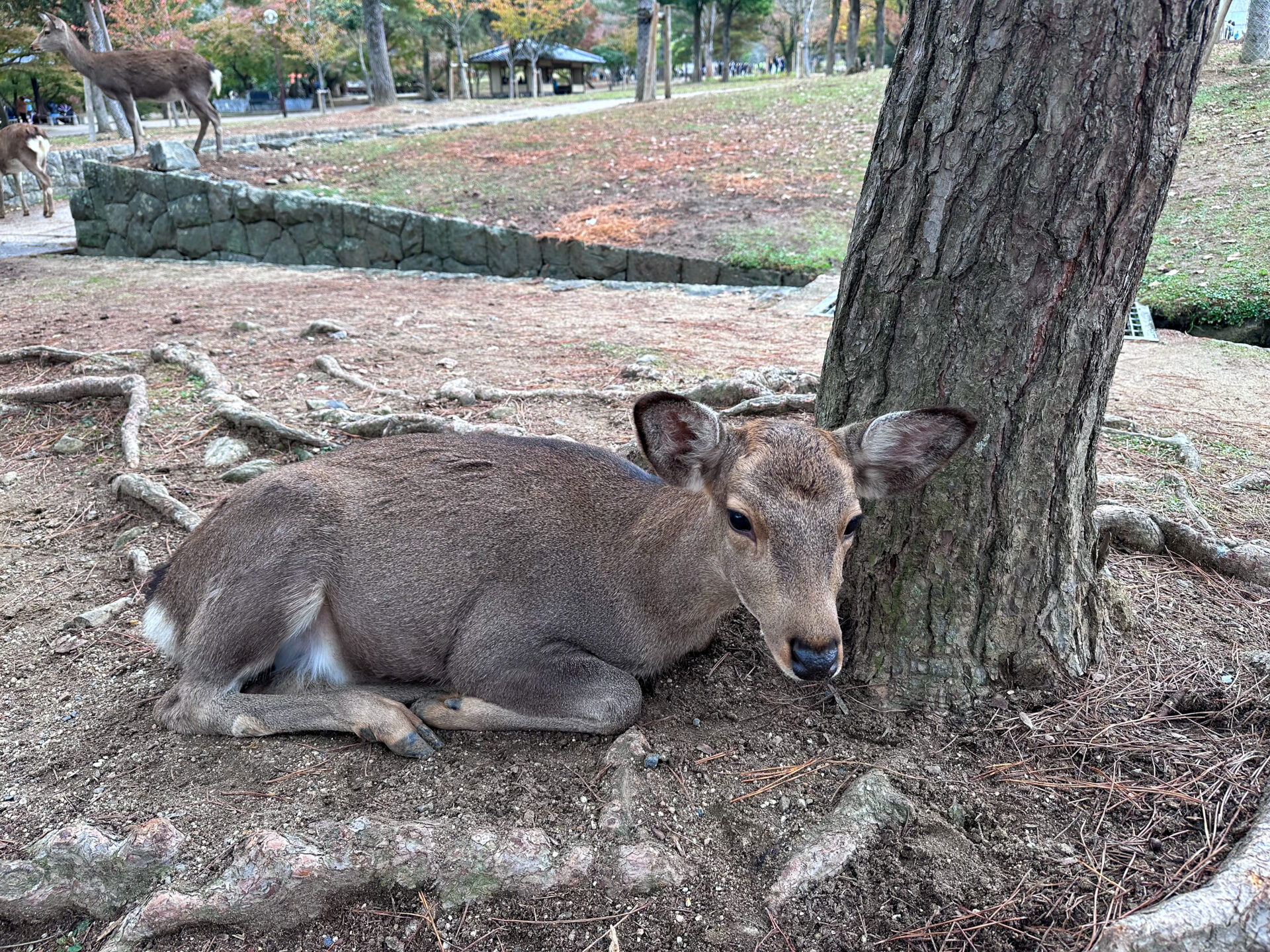
Language barriers
There can be a bit of a language barrier in Japan. I found that many locals, including those working in tourism, didn’t speak English.
It’s a good idea to download Google Translate beforehand. This way, you’ll be able to translate anything if you get stuck.
Buying a SIM card
I suggest ensuring you stay connected while in Japan. The cities are HUGE, and there is so much going on, I can’t imagine going a day without needing to check something.
Of course, you can download Google Maps offline, but I still think it’s worth staying connected.
One thing to know is that SIM cards for tourists in Japan work slightly differently. Most SIMs are data only, meaning even with a physical SIM, you can’t make calls.
This makes eSims a great option for Japan. I used Ubigi and had no issues at all. They’re known to be one of the best eSim providers in Japan.
Alternatively, you can purchase a physical SIM. There are some vending machine at airports, or you can order one ahead of time.
Another option is a portable WiFi device. It’s an extra thing to carry, but it means you can stay connected across all of your devices.
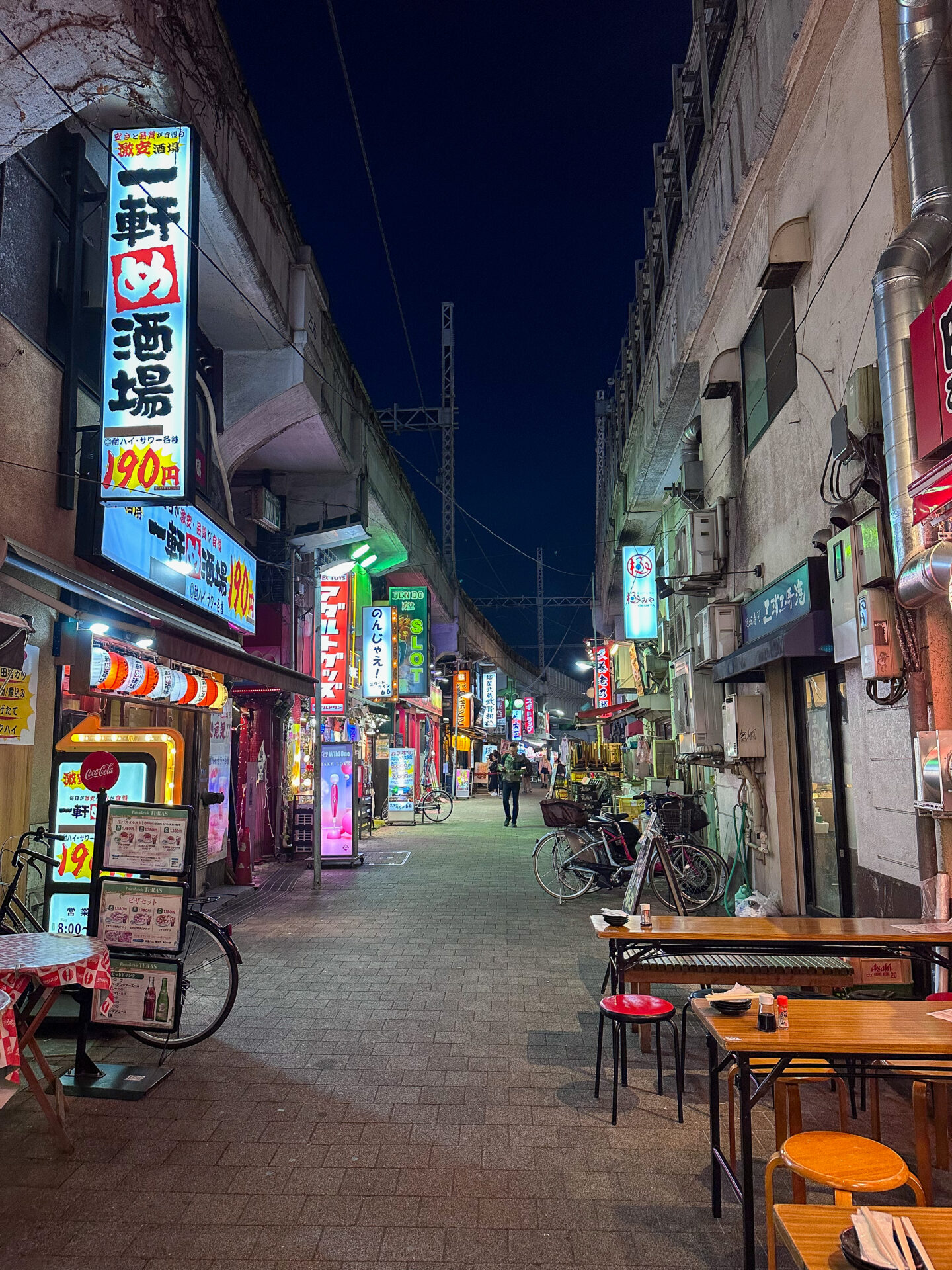
Helpful apps to download
Here are a few apps I recommend downloading for your visit to Japan:
Google Translate
Google Maps
Japan Travel by Navitime (my HOLY GRAIL app for Japan)
Suica or Pasmo (if you get either of the cards)
Nerve (an earthquake and other natural disaster warning app)
Health and safety advice
Japan is a very safe country, even for solo travellers.
I saw so many locals leaving their phones, wallets and laptops unattended in coffee shops while they used the bathroom. It blew my mind!
Having said that, crimes can occur, so it’s important to keep your belongings as safe as possible.
Scams can also happen in Japan. Never give money to a stranger unless you’re sure you know where the money is going.
One common scam in Japan takes place in nightclubs. Tourists are lured into bars, given a lot to drink, and then served one hefty bill. The bill is often in Japanese, so tourists don’t know what they are paying.
Always check the total amount on your bill before paying.

Natural disasters in Japan
One of the main safety concerns in Japan is natural disasters, especially earthquakes.
The country is an earthquake hot spot, and there have been some pretty significant earthquakes there in the past.
Thankfully, Japan is well-versed in dealing with large quakes. Most of the buildings are designed to withstand strong earthquakes, and there are also earthquake specific evacuation routes should you find yourself in a big quake.
It’s not something to overthink or worry about. But, it is a sensible idea to do a bit of research about what to do in the event of a big earthquake.
Tsunamis are also fairly common in Japan. There’s a warning system in place, so you should have time to prepare.
As I mentioned above, the Nerve app is very useful. It’s currently testing an earth earthquake warning system, and also advises you on what to do in the event of a natural disater.
Tipping in Japan
Tipping isn’t a thing in Japan. In fact, if you try to tip someone, it’s sometimes considered rude!
I know it might feel odd to not tip someone who has provided a fantastic service, but it’s not part of Japan’s culture. You might offend someone by trying to tip them.

Shopping in Japan
Japan is one of the best countries in the world for shopping. Many brands, electrical items and skincare products tend to be a little cheaper there.
You’ll also find unique and handy products that have probably never even crossed your mind.
All of the main destinations in Japan have some epic shopping opportunities, especially Osaka and Tokyo.
One unmissable shop in Japan is Don Quijote, also known as Don Don Donki.
I don’t even know how to begin describing this shop. It has everything, literally! Random foods. Useful electrical products you didn’t even know you needed. Cheap skincare. The list goes on.
I know shopping probably isn’t high on your list of things to do in Japan, but it’s really a unique experience.
If you’re looking to buy some souvenirs in Japan, here are a few ideas:
- Japanese snacks (they have every flavour of Kit Kat imaginable)
- Kimono
- Sake
- Chopsticks (and you can get them personalised)
- Lucky charms
- Maneki Neko (a fortune cat)


Japan packing essentials
Unique packing items for Japan
Struggling with what to pack for Japan? Here’s a few items you might not have thought of.
Comfortable shoes: You’ll be doing A LOT of walking in Japan. Like, A LOT. Be sure to wear comfortable shoes that you’ve walked long distances in before.
A reusable water bottle: It’s usually safe to drink the tap water in Japan, so consider taking a reusable bottle to avoid purchasing countless plastic bottles.
A power bank: You’ll be doing a lot of exploring in Japan, and I’m sure taking a lot of photos. It’s a good idea to carry a small power bank with you. This will allow you to charge your phone on the go. You won’t need to worry about returning to your hotel to recharge during the day.
Plug adaptor: The plugs in Japan might be different to what you’re used to. In Japan, they use both type A and type B. I recommend travelling with a universal adaptor to cover you in all circumstances.
An umbrella: I never EVER travel with an umbrella. I just don’t have the space to carry it when I’m backpacking. However, Japan is the first country where I’ve had to buy an umbrella.

What to wear in Japan
You’ll find most Japanese people dress conservatively, wearing mostly neutral colours.
The Japanese take their appearance very seriously, so it’s rare to see locals walking around in sweats and activewear.
Having said that, pretty much anything goes for tourists in Japan. Jeans, dresses, skirts… wear whatever you’re comfortable in.
It’s a sensible idea to dress conservatively when visiting any temples.
Group tours in Japan
If this Japan travel guide has made you question whether or not you want to plan your own trip to Japan, consider joining a group tour.
Group tours are a fantastic way to travel. All your accommodation and transport is organised for you, some activities are included, and you get to travel with like-minded people.
The array of tours on offer for Japan is incredible!
My personal favourite group tour company is G Adventures. They offer a HUGE range of tours in Japan, including for those on a budget and for under fortys, for those who want to see it all, and even for those who want to get off-the-beaten-path.
Check out G Adventure’s full range of Japan tours.
I’ve travelled with G Adventures countless times, and they’ve never let me down.

Summary: Planning your first trip to Japan
Well, that’s my complete first-timers travel guide for Japan finished. I hope it’s helped you in some way.
Japan is one of the most fascinating countries on the planet. It’s filled with ancient history and unique traditions, but also has some incredible modern technology.
I know planning a trip there can feel a bit overwhelming, trust me, I’ve been there. But I promise you, it’ll be worth it.
Thanks for reading this Japan guide!
Continue planning your trip to Japan with my guides:
- Is Japan safe for solo travel? + helpful tips
- Unmissable things to see in Japan
- Why you should visit Japan in November
- 10 reasons to visit the beautiful Hakone
- The best things to do in Hakone
- Find out where to see Mount Fuji from Hakone
- All you need to know about visiting the Mishima Skywalk
- The best day trips from Osaka
- A guide to visiting Minoo Park from Osaka
- A guide to visiting Yanaka Ginza, Tokyo’s hidden gem
- An honest review for the Harry Potter Studio Tour in Tokyo

